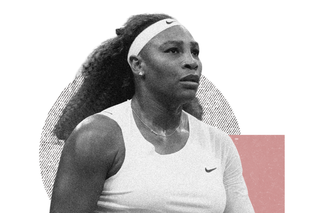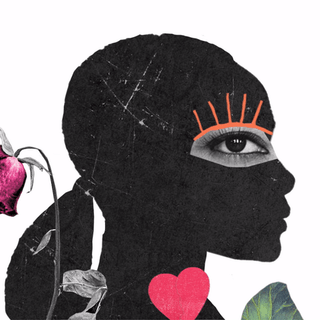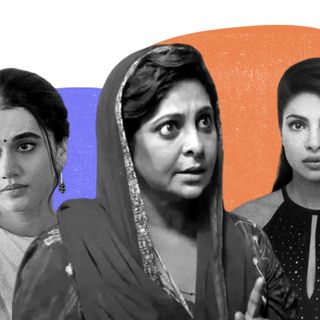
Serena Williams Is Quitting Tennis. It Speaks to Why Fan Cultures Must Allow Athletes to Evolve.
Fans “push” people and value them in absolutes, but Williams’s decision presents a subversive possibility of growing by one’s own measure.

Serena Williams’s life and legacy are stamped across modern memory. A 27-year-long career, some 23 Grand Slam singles titles, an aspiration for women in sports that defies any quantifiable measure — all of these came rushing to mind as the athlete announced a potential departure from tennis on Tuesday. It was time to move on, putting to bed a fantasy of athletic prowess, strength, and dominance.
Williams’s career commands her inclusion among the greatest athlete of all time. Then why would she be passive, even content, with quitting a sport with or without achieving the 24th title — surpassing the dazzling record of Margaret Court? In an essay, she thoughtfully wrote: “I’m here to tell you that I’m evolving away from tennis, toward other things that are important to me.”
Evolution is not a concept we — asardent fans, readers, and viewers — quite understand in the context of sports or media. We understand absolutes, of celebrities and athletes being the “best” and holding the highest records. A peak is the metric of their success and competence. Thus we push, and ask for more displays of their perfection and prowess, with our cultural force providing momentum to their professional journeys. In this context, Williams’s decision presents a subversive possibility of escape. People can evolve and grow by their individual measures and not one manufactured by spectators. How we make sense of her decision, then, is a litmus test for fan cultures and where we’re headed — in terms of how critical, compassionate, and kind we can ever be.
The relationship of the spectator and the player borders on sacred. The fan feels a sense of ownership over their object; thismeaning is derived by placing it at the center of their self and cultural identity. In 2004, a researcher wrote about how fans “tend to seek intimacy with the object of their attention – a personality, a program, a genre, a team.” This intimacy is manufactured both via the screen, social media,and in-person interactions, translating into creating aspirations for them. These are novel pursuits in theory, to desire stars like Serena Williams or Naomi Osaka to win every tournament on the field. This relationship is more pronounced in sports, which isdriven by fan engagement both by way of personal motivation and the revenue their viewership generates. People are almost investing in the person, thus rationalizing the authority one may feel over a decision to stay, quit, or just press pause.
But while these cultures lend relevance and even accountability to figures of admiration, the pedestalization is bound to take away from their personhood. Williams’s achievements outweigh her setbacks in cultural memory, while also remaining silent weights that take a toll. She has had bouts of pulmonary embolisms, injuries, and depression and has played through all of them. The best of her career has come after landmarks that draw censure in sports — the age of 30 and maternity. This tally is both mathematical and emotional, but one that needs to be made for the sole purpose of highlighting the cost of victory, of winning.
It puts into perspective the fatigue of performance, and makes a case for changing how we measure an athlete’s work.
Related on The Swaddle:
Naomi Osaka Quitting French Open Sets an Example to Prioritize Mental Health at Work
“I went from a C-section to a second pulmonary embolism to a grand slam final. I played while breastfeeding. I played through postpartum depression. But I didn’t get there. Shoulda, woulda, coulda. I didn’t show up the way I should have or could have. But I showed up 23 times, and that’s fine. Actually it’s extraordinary,” Williams writes. People can set their own markers of success, ones that look at their careers and not wrangle out a legacy from them. If we do, Williams’s legacy can be one without asterisks — without any ifs and buts that are contingent on some big finishing victory.
This argument is more so for women in sports, whose legacy is distilled down to records and titles, of tangible measures of success that become ways to justify their relevance in a male-dominated field. Rarely ever is the focus on taking stock of the career they have built and what these aspirations mean to women.
Fans then ultimately decide how retirement plays out in sports. Retirement in cultural consciousness signifies a fall after a peak — feeding into a capitalistic idea that only when you’ve accomplished all that you can, been all that you could, can you hang your hat, fold away your whites, and peacefully withdraw. A win, a peak, must precede the next phase of your life, as if mobility between one phase to the next is guaranteed only if it is somehow “earned.” The discourse is murkier for sports because “all too often retirement is forced – through injury or non-selection – and the athlete is left with a niggling feeling that they left unfinished business behind,” as Megan Maurice wrote.
It is no wonder thatWilliams spoke of retirement with a gnawing distaste. And also why we must reframe how we speak about legacies and milestones. A legacy is a full stop. A career, however, is marked with commas, em dashes, anda sentence that meanders into a new story. It is the only way we can give the athlete, who too has derived meaning and identity from the sport, to imagine and live a life beyond performance.
In 2015, Serena Williams spokeof the all-time record she would like to lay claim to. Stefanie Graf had 22 singles titles back then, she just had to get the 23rd. “It’s there, I can see it, just because you can see it doesn’t mean you can reach it.” Williams seems to be revisiting her question now: just because you can see it, doesn’t mean you want to reach it.
Saumya Kalia is an Associate Editor at The Swaddle. Her journalism and writing explore issues of social justice, digital sub-cultures, media ecosystem, literature, and memory as they cut across socio-cultural periods. You can reach her at @Saumya_Kalia.
Related


How Modern Society Complicates the Grief of Heartbreak
